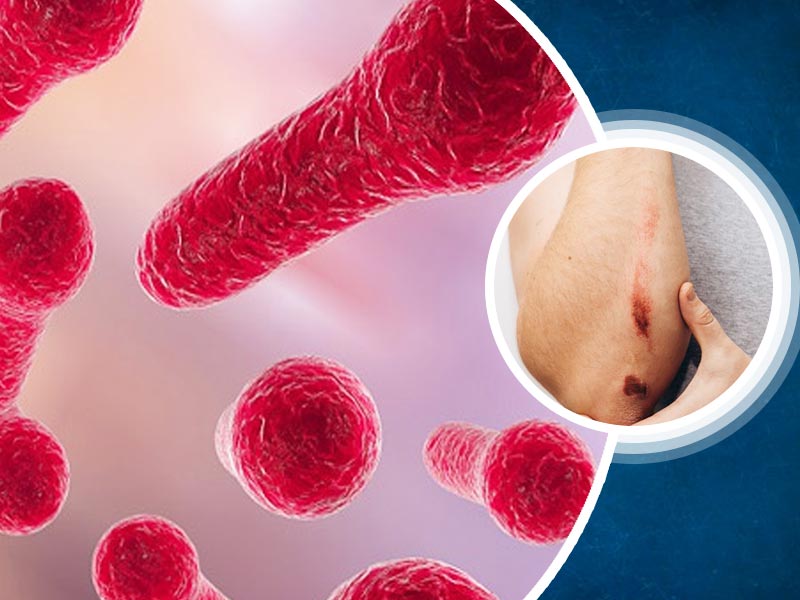Is there any possibility to prevent tetanus infection?
A bacterium that produces a toxin is the source of the deadly neurological condition known as tetanus. Muscle contractions brought on by the illness, particularly in the neck and jaw muscles, are common. Lockjaw is the popular name for tetanus.

Tetanus consequences might be fatal if they are severe. Tetanus has no known treatment. The goal of treatment is to control symptoms and side effects while the tetanus toxin’s effects are still present.
Tetanus cases are uncommon in the United States and other industrialised nations due to the extensive use of vaccinations. Those who are not up to date on their vaccinations continue to be at risk from the disease. It occurs more frequently in underdeveloped nations.
The infection can ultimately be fatal and result in severe muscle spasms, significant breathing problems, and other symptoms. Tetanus therapy is available, however its efficacy varies. Getting the immunisation is the best method to prevent tetanus.
Causes of Tetanus
The bacterium Clostridium tetani is responsible for causing tetanus. Spores of Clostridium tetani have a lengthy shelf life outside of the body. The two places where they are most frequently discovered are polluted soil and animal dung.
Tetanospasmin, a neurotoxin, is released when Clostridium tetani enter the body and grow quickly. It enters the bloodstream and quickly spreads throughout the body, producing tetanus signs and symptoms.
Tetanospasmin causes muscle spasms and stiffness by interfering with the impulses that leave the brain and travel to the spinal cord’s nerves, which in turn travel to the muscles.
Primarily by skin puncture or cut wounds, Clostridium tetani enters the body. Any cut should be cleaned thoroughly to help against infection.
Tetanus is frequently acquired in the following ways:
- wounds that have been infected with excrement or saliva
- burns
- compression wounds
- Dead tissue-filled wounds
- Puncture marks
There are a few unusual ways to get tetanus, including:
- operative methods
- skin-level injuries
- insect stings
- Complicated fractures
- drug usage intravenously
- injections put into muscles
- dental maladies
Symptoms of Tetanus
In most cases, tetanus symptoms start to show up 7 to 10 days after the original infection. But it can take anything from 4 days to around 3 weeks, and in extreme situations, it might even take months.
In general, the incubation period is greater the more away the lesion site is from the central nervous system. Shorter incubation periods are associated with more severe symptoms in patients. Spasms and stiffness are among the signs of muscles. Lockjaw gets its name from the chewing muscles, which are where stiffness typically begins.
After that, neck and throat muscles started to spasm, making it difficult to swallow. Patients frequently have facial muscular spasms. The rigidity of the neck and chest muscles can make breathing difficult. Some patients also experience issues with their leg and abdominal muscles.
The following symptoms will also be present in the majority of tetanus patients:
- soiled stools
- diarrhoea
- fever
- headache
- the capacity for touch
- unwell throat
- sweating
- quick heartbeat
Can tetanus be prevented?
Diphtheria, tetanus, and pertussis are the three diseases that a DTaP vaccination protects against. The CDC advises giving children 5 DTaP vaccinations. At 2, 4, and 6 months of age, the first three shots are given. The fourth shot is administered between 15 and 18 months of age, and a fifth one is administered between the ages of 4 and 6 when a child first enrols in school.
An 11- or 12-year-old should receive a Tdap dosage at routine checkups. The tetanus, diphtheria, and pertussis vaccine is included in the Tdap booster. The Td booster should be substituted with a dose of Tdap if the adult did not receive one as a preteen or adolescent. Adults should have a Td booster every ten years, though it can be administered earlier. For advice, consult your healthcare provider at all times.
REFERENCES:
- https://www.who.int/news-room/fact-sheets/detail/tetanus
- https://www.cdc.gov/tetanus/index.html
- https://www.mayoclinic.org/diseases-conditions/tetanus/symptoms-causes/syc-20351625
- https://www.medicalnewstoday.com/articles/323784
- https://www.hopkinsmedicine.org/health/conditions-and-diseases/tetanus
For more details, kindly visit below.